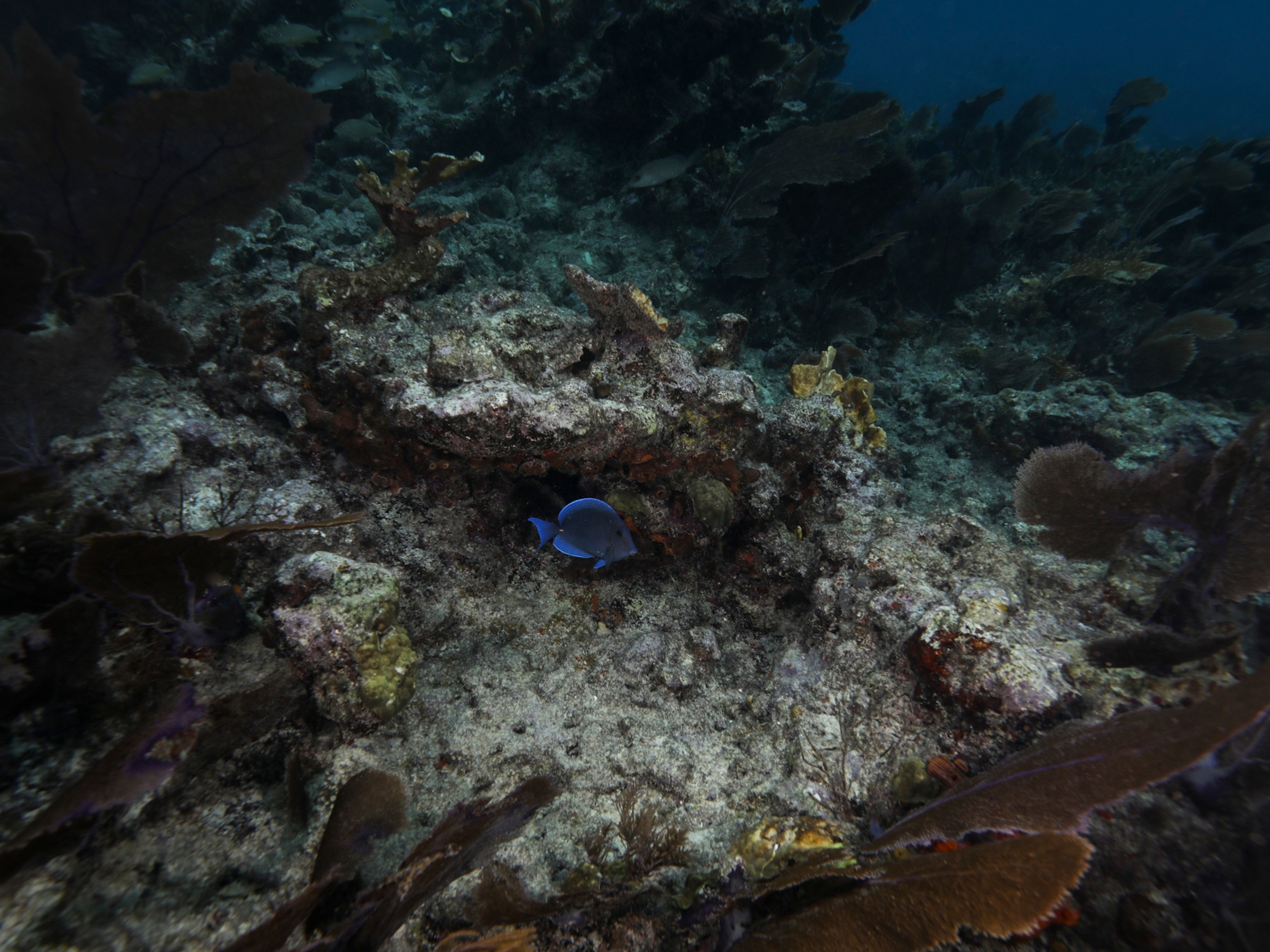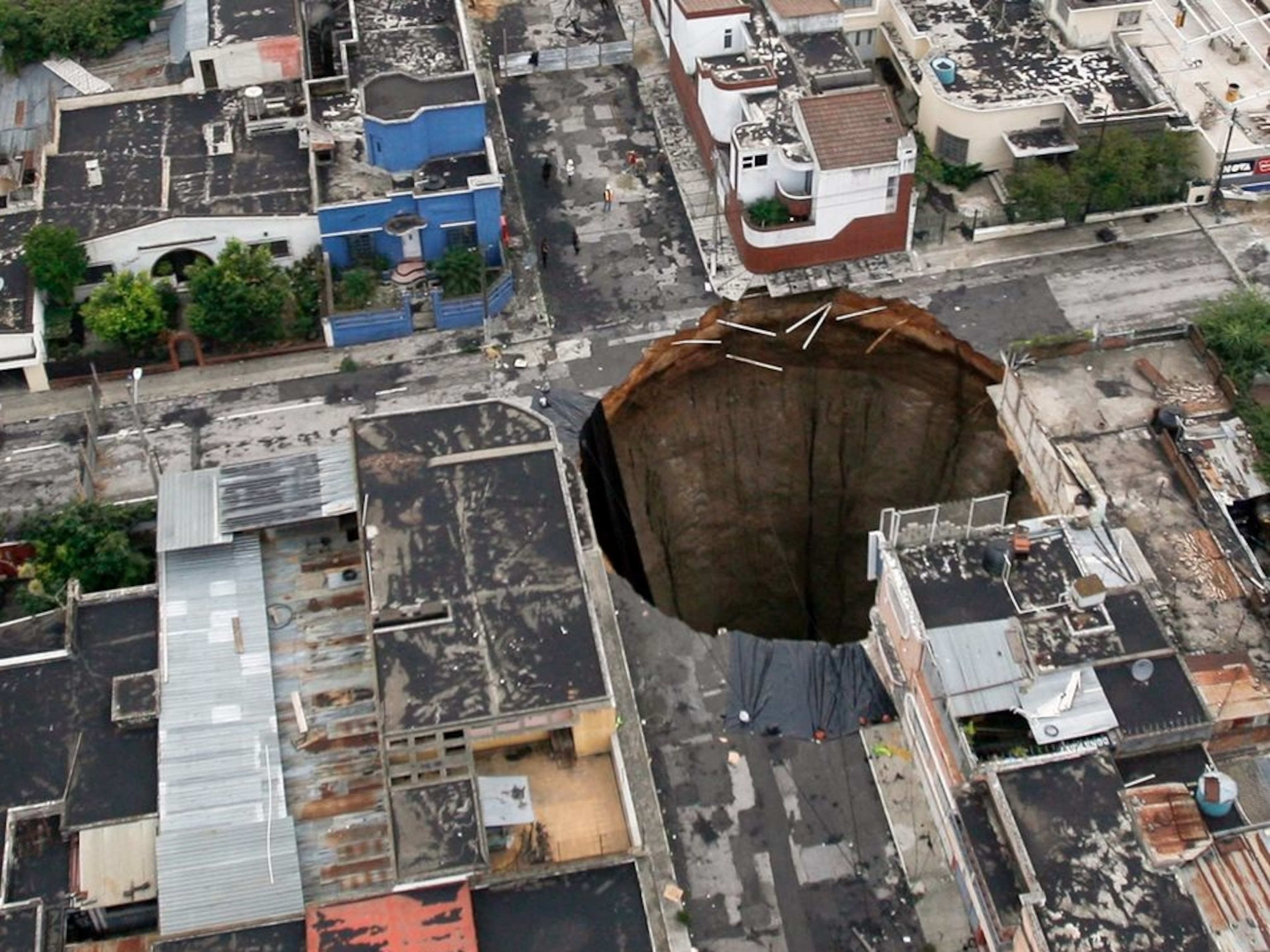
Sinkhole in Guatemala: Giant Could Get Even Bigger
2010 sinkhole spurred by tropical storm Agatha.
A huge sinkhole in Guatemala City (map), Guatemala, crashed into being on Sunday, reportedly swallowing a three-story building—and echoing a similar, 2007 sinkhole in Guatemala.
The sinkhole has likely been weeks or even years in the making—floodwaters from tropical storm Agatha caused the sinkhole to finally collapse, scientists say.
The sinkhole appears to be about 60 feet (18 meters) wide and about 30 stories deep, said James Currens, a hydrogeologist at the University of Kentucky.
(See more photos of the Guatemala City sinkhole, and a Texas sinkhole picture.)
Sinkholes are natural depressions that can form when water-saturated soil and other particles become too heavy and cause the roofs of existing voids in the soil to collapse.
Another way sinkholes can form is if water enlarges a natural fracture in a limestone bedrock layer. As the crack gets bigger, the topsoil gently slumps, eventually leaving behind a sinkhole.
It's unclear which mechanism is behind the 2010 Guatemala sinkhole, but in either case the final collapse can be sudden, Currens said.
(Related: "Sinkhole Holds 12,000-Year-Old Clues to Early Americans.")
2010 Guatemala Sinkhole Could Grow
A ruptured sewer line is thought to have caused the sinkhole that appeared in Guatemala City in 2007.
The 2010 Guatemala sinkhole could have formed in a similar fashion, Currens said. A burst sanitary or storm sewer may have been slowly saturating the surrounding soil for a long time before tropical storm Agatha added to the inundation.
"The tropical storm came along and would have dumped even more water in there, and that could have been the final trigger that precipitated the collapse," Currens said.
(See Guatemala pictures from National Geographic Traveler magazine.)
Depending on the makeup of the subsurface layer, the Guatemala sinkhole "could eventually enlarge and take in more buildings," he said.
Typically, officials fill in sinkholes with large rocks and other debris. But the 2010 Guatemala sinkhole "is so huge that it's going to take a lot of fill material to fill it," Currens said.
"I don't know what they're going to do."
More: Traveler's overview of recent Guatemala natural disasters >>




